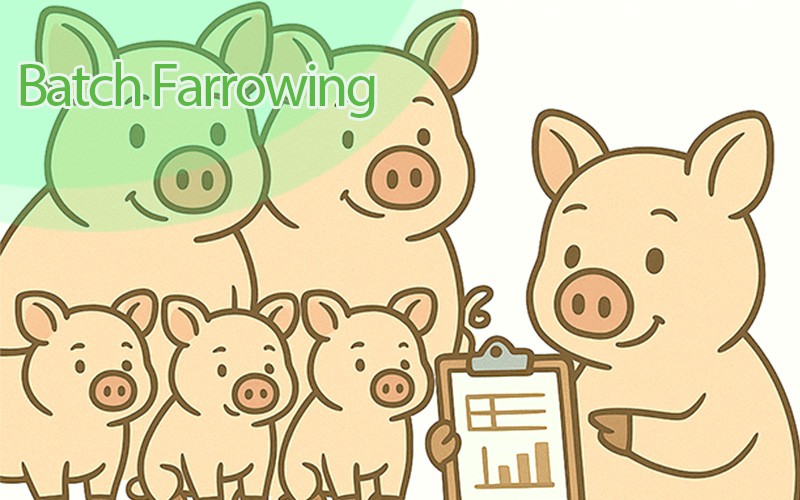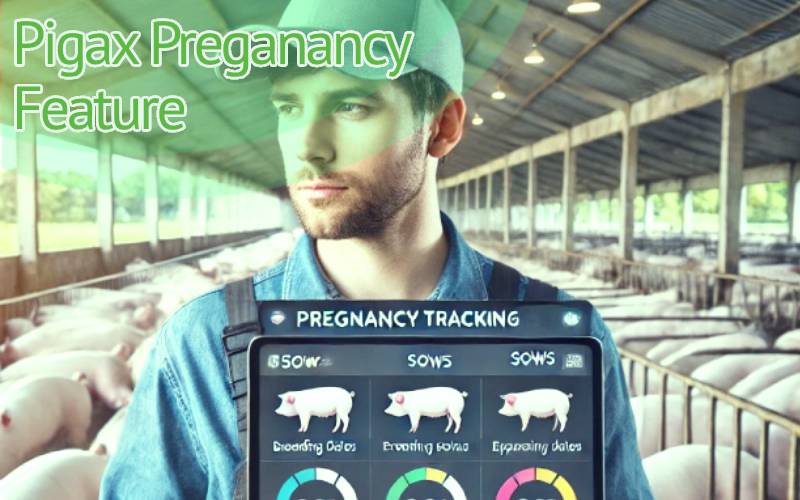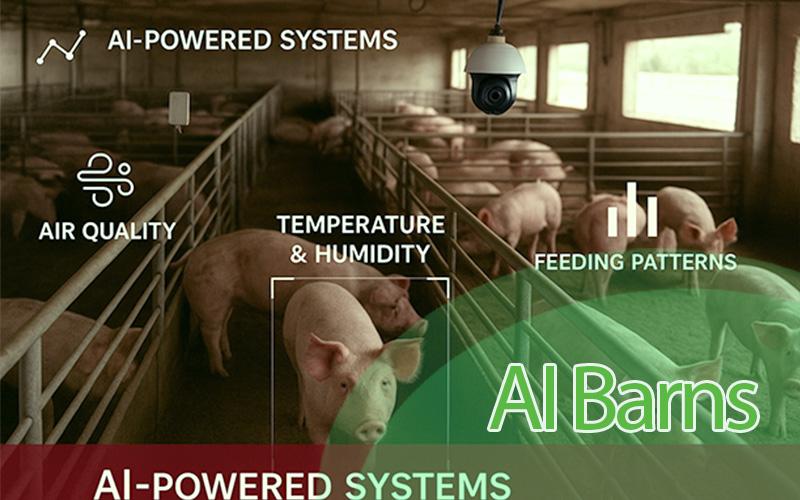7 Major Health Trends of Pig Management in 2025
The pig industry is changing rapidly, driven by new technologies and a growing awareness of the need for better animal health and welfare. In 2025, farmers, veterinarians, and researchers are working together to create healthier and more sustainable pig farming practices. These changes are not only helping pigs live better lives but are also ensuring that farms remain productive and profitable in the face of challenges like disease outbreaks and consumer demands for responsibly produced pork. This blog explores some of the major health trends that are shaping the industry this year and how they are helping farmers overcome these challenges.
2025 Health Trends in the Pig Industry
Some of these trends have already been used in 2024, but now they will be used more eficiently and in more pig farms accross the globe. Here are some major technology trends in 2025.
Precision Livestock Farming (PLF)
Precision Livestock Farming technologies are revolutionizing the way pigs are raised. By integrating advanced sensors, artificial intelligence (AI), and data analytics, farmers can now monitor the health, behavior, and productivity of individual pigs in real time. This approach allows for early detection of health issues, leading to faster interventions and reduced losses.
For instance, wearable devices can measure vital signs such as heart rate, body temperature, and activity levels. Smart cameras equipped with AI can analyze pigs' movements to detect lameness or signs of distress. Studies, such as those published in the Journal of Animal Science, have shown that these technologies can significantly reduce mortality rates and improve overall herd health. By automating data collection and analysis, PLF not only enhances animal welfare but also boosts farm profitability.
Focus on Gut Health
Gut health is becoming a central focus in pig farming as researchers uncover its critical role in overall animal performance and immunity. In 2025, advancements in microbiome research are driving the development of innovative feed additives that support a healthy gut environment. These include prebiotics, probiotics, and postbiotics that promote a balanced gut microbiota.
Addressing common issues like post-weaning diarrhea is a priority. According to research from the Frontiers in Veterinary Science, incorporating dietary fibers and organic acids into piglets' diets has shown promise in reducing gastrointestinal disorders. Strengthening gut health not only minimizes the need for antibiotics but also enhances nutrient absorption, leading to better growth rates and improved feed efficiency.
Antimicrobial Stewardship
The global effort to combat antimicrobial resistance (AMR) is reshaping antibiotic use in livestock. In 2025, stricter regulations and heightened consumer awareness are pushing the industry toward alternative disease management strategies. Vaccines, immune modulators, and enhanced biosecurity measures are gaining traction as effective ways to reduce reliance on antibiotics.
For example, the European Union's ban on prophylactic antibiotic use has spurred innovation in disease prevention methods. Enhanced surveillance systems, such as those implemented by the World Organisation for Animal Health (WOAH), are helping monitor AMR trends. Producers are increasingly adopting vaccination programs tailored to local disease risks, ensuring healthier herds and aligning with market demands for antibiotic-free pork.
Biosecurity Innovations
Biosecurity has taken center stage in the wake of devastating outbreaks like African Swine Fever (ASF). In 2025, producers are implementing advanced measures to safeguard their farms from infectious diseases. Automated disinfection systems and cutting-edge air filtration technologies are becoming standard features in modern pig farming facilities.
Blockchain technology is also playing a pivotal role in traceability, ensuring transparency across the supply chain. By recording every stage of production, from feed sourcing to pork distribution, blockchain helps identify and contain potential contamination sources quickly. These innovations are essential for maintaining disease-free status and meeting stringent export requirements.
Sustainable Health Practices
Sustainability is a driving force behind many of the health trends in pig farming. Producers are adopting practices that balance animal welfare with environmental responsibility. For instance, precision feeding techniques minimize waste by delivering tailored nutrition to each pig based on its specific needs.
Efforts to reduce greenhouse gas emissions include using low-protein diets supplemented with amino acids and employing advanced manure management systems that capture methane for energy production. Welfare certifications, such as those offered by Global Animal Partnership (GAP), are gaining popularity as consumers prioritize ethically sourced products. These certifications encourage practices that promote both sustainability and animal health.
Genetic Advancements
Genetic technologies are unlocking new possibilities for disease resistance and productivity in pigs. In 2025, tools like CRISPR gene editing are enabling researchers to target specific genetic markers associated with health issues. For example, editing genes to make pigs resistant to diseases like Porcine Reproductive and Respiratory Syndrome (PRRS) is showing promising results.
Additionally, genomic selection is improving traits such as growth rate, feed conversion efficiency, and resilience to environmental stressors. According to studies in Nature Biotechnology, these advancements are reducing the reliance on medical interventions while enhancing the overall performance of pig herds. As ethical and regulatory frameworks evolve, genetic innovations will likely become a cornerstone of sustainable pig farming.
Mental Health and Stress Management
Recognizing the impact of stress on pigs' health and productivity, the industry is prioritizing measures to improve their mental well-being. Enrichment tools, such as toys and rooting materials, are being introduced to stimulate natural behaviors and reduce boredom. Improved housing designs with better ventilation and more space are also helping to minimize stress.
Scientific research, including findings from the Applied Animal Behaviour Science journal, highlights the link between reduced stress and stronger immune responses in pigs. By addressing psychological needs alongside physical health, farmers are fostering healthier and more productive animals.
The Future of Pig Farming with Pigax
Pigax is emerging as a transformative tool in pig farming, offering farmers an integrated platform to manage every aspect of herd health and productivity. By leveraging advanced analytics, Pigax allows farmers to monitor individual pigs' growth, feed consumption, and medical history in real time. This level of detail helps identify health trends and potential risks before they escalate.
Pigax also simplifies regulatory compliance by automating record-keeping and generating detailed reports. This feature is particularly valuable as governments introduce stricter regulations on animal health and welfare. The software’s predictive capabilities are another standout, enabling farmers to forecast disease outbreaks based on historical and environmental data.
By integrating these tools into daily operations, Pigax is reducing labor-intensive tasks and freeing up time for farmers to focus on strategic decision-making. Its user-friendly interface ensures that even those with limited technical expertise can take full advantage of its features. As pig farming becomes more data-driven, Pigax is setting a new standard for efficiency and innovation in the industry.
Conclusion
The pig industry in 2025 is poised for a transformative shift with a strong emphasis on technology, sustainability, and animal welfare. Farmers are encouraged to embrace these advancements to improve their operations, ensure better animal health, and meet the demands of a changing world. By staying informed and adopting new tools like Pigax, producers can secure a brighter and more sustainable future for pig farming.




